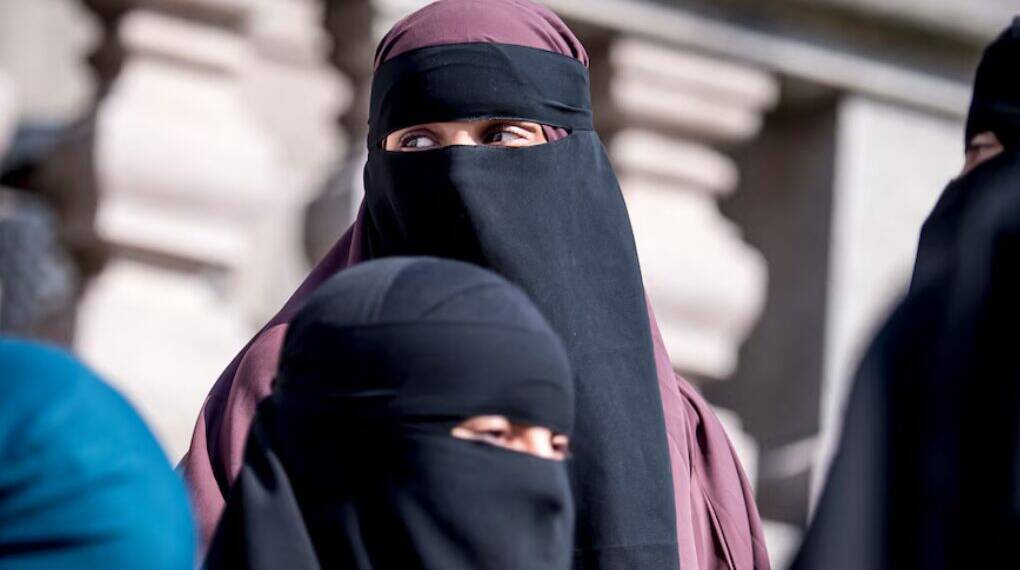The hijab, a headscarf worn by many Muslim women, has become a focal point in global debates over religious expression, national identity, and state authority. While for countless women the hijab represents a personal commitment to faith and modesty, its presence in public life has sparked divergent responses from governments and societies around the world.
In regions such as Central Asia, including Kazakhstan, recent laws have moved to restrict or ban face coverings, often citing national security and secular values, while in much of West Asia and the Gulf, the hijab and similar garments are embraced as integral to cultural and religious identity.
These differing approaches highlight the hijab’s multifaceted role at the intersection of personal freedom, societal norms, and political agendas, rendering it a powerful symbol in ongoing discussions about inclusion, tradition, and modernity.
Kazakhstan’s Ban on Face Coverings
In June 2025, Kazakhstan’s President Kassym-Jomart Tokayev signed into law a bill that prohibits the wearing of clothing in public places that obscures a person’s face, with exceptions for medical, professional, weather-related, cultural, and civil defense reasons. While the law does not explicitly mention religious attire, it directly affects garments such as the niqab and burqa, typically worn by some Muslim women. The government justifies the ban on security grounds, arguing that face coverings hinder identification and pose risks to public safety. Officials also emphasize that such garments are not traditional to Kazakhstan and are perceived as symbols of radicalization, contradicting the country’s secular values and national identity.
The legislation follows earlier restrictions: hijabs were banned in schools in 2017 and, more broadly, for students and teachers in 2023, sparking protests from those affected. The new law aligns Kazakhstan with neighboring Central Asian republics, which have also moved to restrict Islamic face coverings in public spaces.
Central Asia: Growing Restrictions
Kazakhstan is not alone in this approach. Kyrgyzstan enacted a law in January 2025 banning the niqab in public places, with fines for violations. Uzbekistan implemented a similar ban on burqas and face veils in 2023, citing public order concerns. These policies are part of a broader trend among secular governments in Central Asia, where authorities see face coverings as both a security threat and a challenge to national traditions.
West Asia and the Gulf: Contrasting Approaches
In contrast, many West Asian and Gulf countries either mandate or permit face coverings as part of Islamic practice:
Saudi Arabia and Iran: Both countries require or strongly encourage women to wear face-covering garments in public. In Saudi Arabia, the abaya and niqab are common, while in Iran, the hijab is mandatory, and face coverings are widely accepted.
Turkey and Lebanon: These countries generally allow face coverings, though Turkey has at times restricted headscarves in public institutions, a policy that has been relaxed in recent years.
Gulf States (UAE, Qatar, Kuwait, etc.): Face coverings are permitted and culturally widespread, with no bans in public spaces.
China: Targeted Regional Ban
China’s approach is region-specific. In 2017, authorities banned the burqa and other face-covering garments in Xinjiang, home to the Muslim Uyghur minority, as part of broader measures to control religious expression and purportedly combat extremism. The ban is enforced strictly in Xinjiang but does not apply nationwide.
Europe: Secularism and Security
Several European countries have enacted bans on face coverings in public, often citing secularism and security:
France: Introduced a nationwide ban on full-face veils in public spaces in 2011, becoming the first European country to do so.
Belgium, Austria, Denmark, Switzerland, and others: Have implemented similar bans, with varying degrees of enforcement and public support.
These laws are frequently challenged in courts and remain contentious, reflecting ongoing debates over integration, religious freedom, and national identity.
India: Legal Ambiguity and Regional Variation
India does not have a national ban on face coverings. Muslim women are generally free to wear the hijab, niqab, or burqa in public. However, specific states have imposed restrictions in certain contexts:
Karnataka: In 2022, the state’s high court upheld a ban on hijabs in educational institutions where uniforms are prescribed, sparking national debate and protests.
Other States: There have been calls from some political leaders for broader bans, but these have not translated into national legislation.
The Indian Supreme Court remains divided on the issue, recognizing both the right to religious expression and the state’s authority to set dress codes in schools.
Kazakhstan’s new law banning face coverings in public reflects a broader Central Asian trend of restricting Islamic veiling as part of efforts to maintain secularism, reinforce national identity, and address security concerns.
This approach underscores the delicate balance these states seek between upholding secular governance and navigating the cultural realities of predominantly Muslim populations. In sharp contrast, much of West Asia and the Gulf either require or widely accept face coverings as integral expressions of religious and cultural tradition. Meanwhile, China’s targeted ban in Xinjiang and India’s patchwork of state-level policies illustrate how face covering laws are shaped by specific local political, cultural, and security dynamics.
Across Europe, similar bans are often justified on grounds of security and social integration. Together, these diverse and sometimes conflicting approaches highlight the ongoing global struggle to reconcile religious freedom with state authority, and to define the role of personal expression within the shared spaces of increasingly diverse and pluralistic societies.








